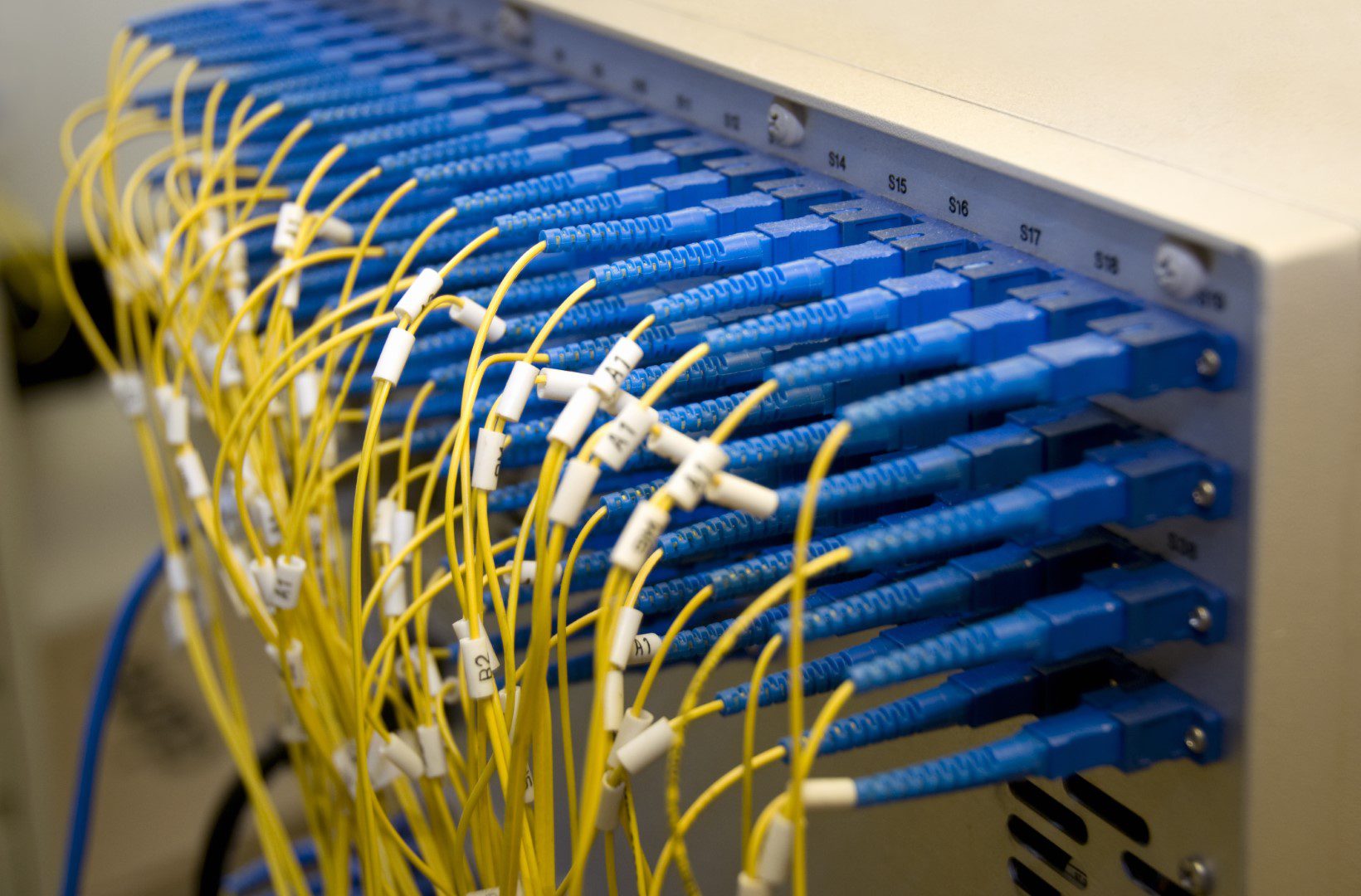Fibre-to-the-Cabinet (FTTC), a cutting-edge fibre optic broadband solution blending the strength of copper and fibre optic cables. This innovative technology involves extending fibre optic cables from a telephone exchange to street cabinets near your premises, with the remaining connection via existing analogue copper lines.

Whether you run a successful business or you are looking for the best business broadband packages available, knowing the merits of the various broadband connectivity options available on the market, of which Fibre to the Cabinet is one, will put you in good stead to make the right choice for yourself and for your business.

Fibre-to-the-Cabinet (FTTC) is a type of fibre optic broadband. It is a blend of copper and fibre optic cables. This means running fibre optic cables from a telephone exchange (or distribution point) to the street cabinets close to your premises, and the remaining connection to your premises is run over the existing analogue copper lines. The way FTTC works is that the user deploys a router, usually from the Internet Service Provider (ISP), which enables them to decode and receive fast broadband, also known as Fibre Broadband.
This type of fibre broadband service uses VDSL technology which can deliver much faster speeds over shorter distances. The distance from the street cabinet can reduce the actual broadband connection speeds, but nothing like the loss on full copper based products such as ADSL

FTTC and FTTP are often compared to each other. Fibre to the Cabinet (FTTC) is less expensive to install and is often used as a more economical substitute to the Fibre-to-the-Premises (FTTP) pure fibre optic solution. The former is currently much more readily available in the UK.
Whilst FTTP broadband is a pure fibre optic delivery method that promises super-fast delivery into people’s homes and businesses directly from an Internet Service Provider (ISP), Fibre to the Cabinet (FTTC) is a blend of copper and fibre optic cables. FTTC uses fibre optic cables right up to the street cabinet, and then an existing copper telephone line, known as a PSTN (Public Switched Telephone Network) line, to connect the cabinet to your premises, be it your home or your business.
FTTP (Fibre-to-the-Premises) and FTTH (Fibre-to-the-Home) are essentially the same thing, but FTTP is used as an umbrella term, which includes both non-residential and residential premises.

Although Fibre-to-the-Cabinet still relies on existing copper telephone lines, by replacing a high proportion of the copper wires to the cabinet with fibre, it means that the average speeds achieved become significantly higher, than on an all copper connection. Because this method only uses a short section of copper cable, it removes the disadvantages of long copper lines, and allows download speeds of up to 80MB. Essentially the loss characteristics of fibre are far better than copper over long distances.
In other words, you get faster speeds as the short copper line can run VDSL (Very High Bitrate Digital Subscriber Line), rather than ADSL (Asymmetric Digital Subscriber Line) technology. The main difference between the two technologies is the broadband speed. ADSL technology can achieve a maximum download speed of 24 mbps, and 1 mbps upload speed, whilst VDSL can reach speeds up to 80 mbps for download, and 20 mbps for upload speed.

FTTC broadband is widely available in the UK, but before installation, providers will need to do a quick check on your postcode to ascertain current availability. If you want to determine your current broadband speeds are a good place to start is here.
Fibre to the Cabinet comes in two main variants with regards upload and download speeds, but a converged business option is a favoured one for combined VoIP (Voice Over Internet Protocol), and IT installations. Delivering QOS to ensure voice quality is guaranteed, this is scalable, bundled service is designed to enable voice and data to utilise the same circuit.
FTTC services can usually be available in 10 days and while more expensive than traditional ADSL (Asymmetric Digital Subscriber Line) technology, they offer significant savings over a leased line.

To get everyone connected directly to pure fibre broadband would be a very costly process, but FTTC offers a cost-effective way of providing homes and businesses the speed and stability benefits of Fibre Broadband.
It is important to note that with Fibre to the Cabinet, your business does not benefit from a dedicated connection. Therefore, if your business is internet critical, in other words, if your business heavily relies on robust data connectivity and sensitive data handling, FTTC may not be the ideal choice for you. Solutions such as FTTP or Leased Lines should be considered.
Although FTTC broadband has strong merits, it is not built for the long haul. It is a contended service, which means that you will be sharing the fibre bandwidth with all the other users who are connected to the same cabinet. Because of this, you may notice significant peak time fluctuations in your broadband connection. The likelihood is that the first customers to be connected to the FTTC cabinet will benefit from superfast speeds, however, it is to be expected that the more customers are connected to the same cabinet, the quicker these speeds will decrease for all users.
Fibre-to-the-Cabinet (FTTC) uses very high frequencies to transmit the broadband, and at these high frequencies, customers may notice something called copper cable crosstalk. This is a phenomenon by which a signal transmitted on one pair of copper cables or one channel, creates an undesired effect on another pair or channel.

Fibre to the Cabinet broadband comes in two main variants which offer a download line connection speed of 80 meg (80 Mbps) or 40 meg (40 Mbps), but the actual maximum throughput speed of the service in reality will be slightly lower than this at around 76 or 38 Mbps respectively. Upload speeds are available at either 2Mbps or 10Mbps on the 40 Mbps offering, with approximately 20 Mbps upload on the 80 Mbps.
And finally, this service is not covered by a Service Level Agreement (SLA) as with Leased Lines. An SLA is a contract between the service provider and the end user that defines the level of service expected from the service provider, should anything go wrong, giving customers complete peace of mind over guaranteed uptime, quick service restoration, and 24/7 service monitoring.
To understand more on the comparison of this product to FTTP or FTTH both of which can offer even higher speeds and answer the question as to what is the difference between FTTP and FTTC? The key difference which enables higher speeds is in the copper or fibre delivery to the premises.

Because of the higher frequencies used, broadband signals are highly susceptible to a specific type of interference which is known as crosstalk. It derives from other VDSL broadband signals being carried along adjacent pairs.
This can result in a significant decline in broadband speeds as the penetration of fibre broadband in the service area increases. It is basically impossible to predict the extent to which a particular broadband user will suffer degraded performance due to their crosstalk interference. The level of crosstalk interference depends on the relative position of the pairs carrying VDSL signals with respect to one another. Effectively, one broadband user can experience significant degradation whereas another could be unaffected. This makes for difficulty in accurate predictions of broadband speeds. VDSL2 vectoring, a form of noise cancellation, on copper pairs makes significant improvements. Distances over 1Km from the street cabinet will likely see 80 Mbps circuits deliver actual speeds of approximately half of the theoretical speeds e.g 32Mb download.
The use of copper cables in the last mile will significantly reduce the bandwidth speed that can be achieved from an FTTC service. The signal degrades over copper, so the longer the copper wire from the cabinet to the business premises, the slower the speed a business will get from the FTTC service. Rural areas, which can typically be 2-3 Km away from the cabinet, can experience much lower speeds than those that are say 200 meters from the cabinet.
Fibre optic broadband is being deployed around the UK by multiple fibre network operators, and while it’s not available to every business, the vast majority of premises do already have fibre broadband. Contact Juno with the Post Code details at the premises you want broadband services deployed.
Faster and more reliable fibre is coming to your area soon. FTTC broadband services are available to millions of premises nowadays.
Check with your internet provider to check if your copper wires can be upgraded to FTTC. Fibre to the Cabinet increases broadband speeds significantly. Contact Juno Telecoms to run your address through their FTTC checker. Normal delivery is two weeks assuming a suitable analogue phone line is in place.
Our fibre to the cabinet prices vary. It depends on the type of usage that you need, and the throughput available at your building. At Juno Telecoms we have a range of business deals and packages available for you to choose from.
This will depend on how close the fibre cable is to the distribution point in the fibre cabinet close to your premises. Contact Juno and they will advise if the analogue line or specific address can support FTTC.
Gain insights from our latest blog posts. These articles are packed with expert tips and updates in telecommunications to help you stay ahead.
For general enquiries, please contact us using the details below, or fill out the enquiry form.










We specialise in enhancing business connectivity with cutting-edge technology and personalised services, ensuring your business stays connected.
Company No: 04952400
Are you looking for a new website? Contact Outrank Today
